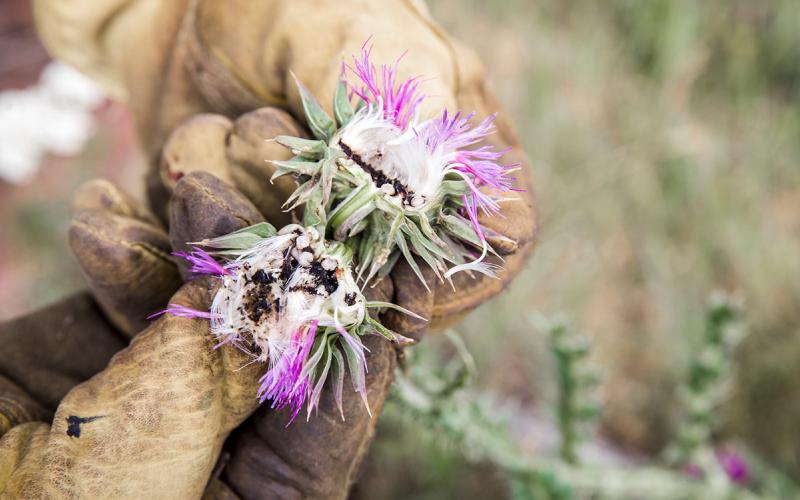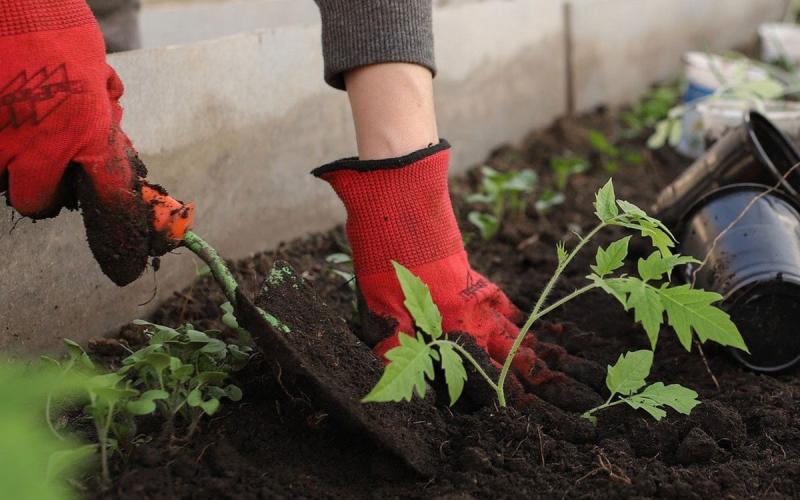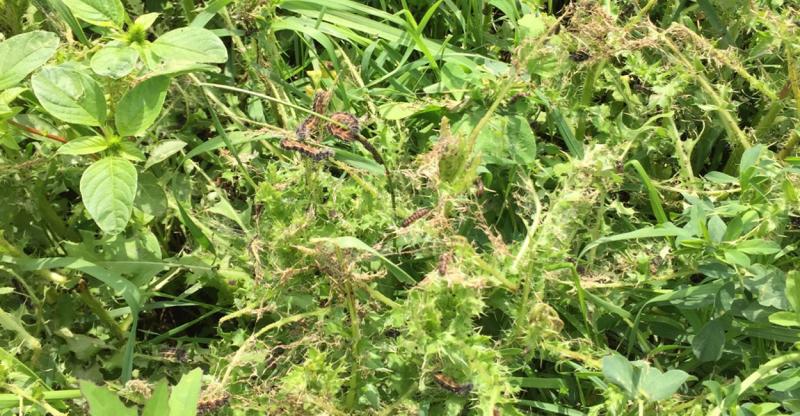
Originally Submitted: June 24, 2021
While destroying some Canada thistle, I noticed that there were thistle caterpillars on it (Figure 1).
Although thistle caterpillars are normally first observed in July or August, it is possible for them to appear earlier if weather conditions are favorable.
The adult form of the thistle caterpillar is the Painted Lady butterfly, which overwinters in the Southern United States and parts of Mexico (Figure 2).
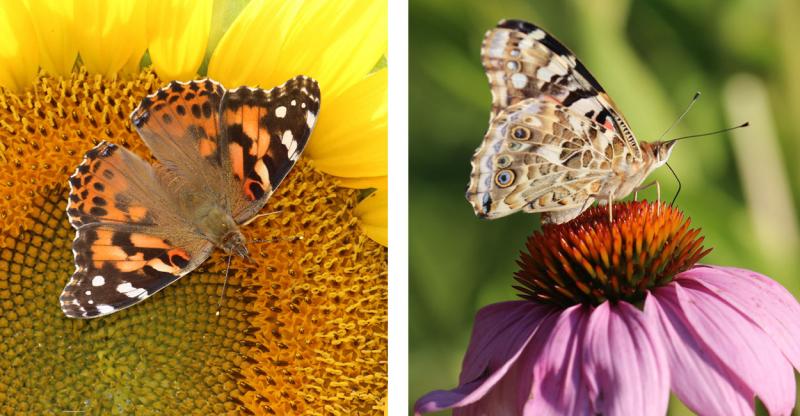
Thistle caterpillars are a polyphagous insect, which means they can feed on many different hosts. It is estimated that thistle caterpillars are capable of feeding on over 100 species of plants, including some of South Dakota’s major crops like soybean and sunflower.
In addition, they may also feed on some garden plants. Its polyphagous nature causes the thistle caterpillar to often be considered a pest. However, when it feeds on weeds, such as Canada thistle, it may be considered a beneficial insect. Although these caterpillars are generally not present in high numbers, they can cause severe defoliation. In the case of weed management, they can greatly reduce the aboveground biomass of Canada thistle. Throughout their migratory flight, there are several generations of painted lady butterflies, and subsequently several generations of thistle caterpillars.
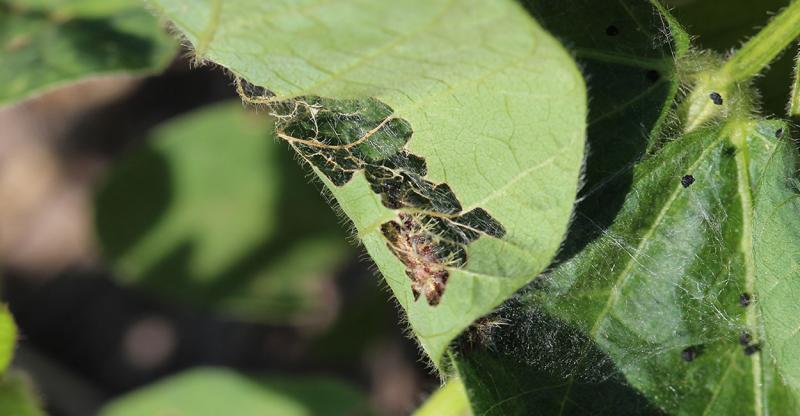
Like on crop hosts, the thistle caterpillars feed on thistle leaves by rolling them and using silken webbing to hold them.
In Figure 1, the caterpillars can easily be observed feeding on top of the plants and not in a protective leaf covering. The caterpillars appear to have silken hideouts made on the plants but are foraging out from them. These hideouts provide shelter to the caterpillars (Figure 3).
The thistle caterpillars can vary in coloration but are typically a brown or black color with a lighter colored line running the length of their bodies on each side (Figure 4).
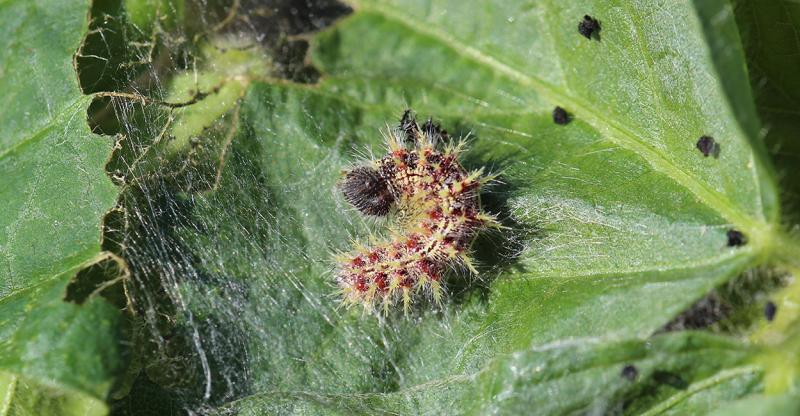
Unfortunately, the thistle caterpillar will not remove Canada thistle from an area. This is due to the extensive horizontal root structure of Canada thistle. Although the plants may not flower and set more seeds, they will return the following year.
In addition, reports of trying to use thistle caterpillars as biocontrol agents for Canada thistle have resulted in high infestation rates of surrounding crop fields. Therefore, the thistle caterpillar is not an ideal biocontrol agent for the management of Canada thistle.
